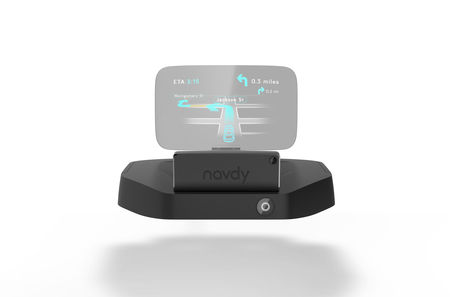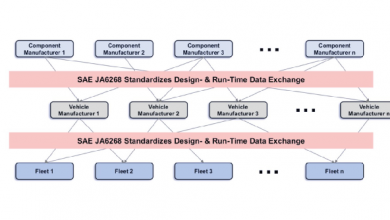Navdy launches dashboard Head-Up Display (HUD): Google Glass for your Car
“You’re not looking down at knobs and buttons and touchscreens. You’re able to keep your eyes on the road at all times. Improving safety is one of our big goals, and related to that, the distracting driving studies show the biggest issues are eyes on the road and we’re doing everything we can to ensure driver’s eyes stay on the road.“ Doug Simpson, CEO | Navdy
Eyes on roads, hands on wheels is something that should be kept in mind while driving. However, with the advent of interactive HMIs, multitude of buttons and knobs, it has become slightly problamatic for drivers. Reports have suggested that, distracted driving accounted for 10 percent of all traffic deaths in 2011, when 3,331 people were killed. That’s a slight increase from 2010, when 3,092 people died. But there’s some question about exactly what percentage of those fatalities and the overall crashes were caused by either in-car infotainment systems or mobile electronics.
Various solution providers are turning their heads up in a hope to bring out solutions that can support tha maximum functionality without promoting distracted driving. Inspired to fulfill this need, Navdy brought up a small, transparent lens sitting on the dashboard that hovered turn-by-turn directions over the windshield. It’s a device that can be mounted on any car’s dashboard and it provides a high-resolution heads-up display that helps you see the road behind it. Simpson says the technology is the same used by pilots when they land an airplane.
Navdy’s Head-Up Display(HUD), which is available for preorder starting today, doesn’t just do directions. Via voice or hand gestures, it can display essential data from a car’s computer, read and respond to a text message or pull up a requested song. The lens floats the information seemingly six feet in front of you, a distance that Navdy says allows drivers to never move their eyes from the road. The device is powered by plugging it into the on-board computer, which cars manufactured since 1996 should have. Once it connects to your phone via Bluetooth, Its voice and gesture controls allow you to take calls, reply to texts and ask for directions without having to pick up your phone. You do need the iOS or Android app to help set up the device.
When a call or text comes in, the screen splits into two so navigational data is still visible. The types and timing of notifications can be customized; for example, texts can appear only when the car has come to a complete stop at an intersection, or not at all, if a user wishes. Navdy is programmed through a mobile app on iOS or Android devices, from which it also pulls GPS info, music and notifications. It plugs into cars’ computers for power.Navdy will rely on its users to program in settings that conform to local law, whether that means no texting on the road or no calls altogether. Simpson acknowledged people using the device in violation of the rules is a concern, but Navdy will do what it can to inform users of their responsibility. And if people are going to text anyway, Navdy is a better option that looking at and typing on a phone.
When it is linked to the car’s on-board computer, it can also project speed, RPM, fuel economy stats, tire-pressure warning or battery-voltage warning, among others. Users can customize the display to show something specific, such as a large RPM dial in the center. The company launched a 30-day pre-order campaign today, where early adopters can purchase the product at $299. The retail price of Navdy is $499. They’re also implementing a referral program that if you refer someone to Navdy, you can get $30 in credit.
Check out the cool demo video….:)




